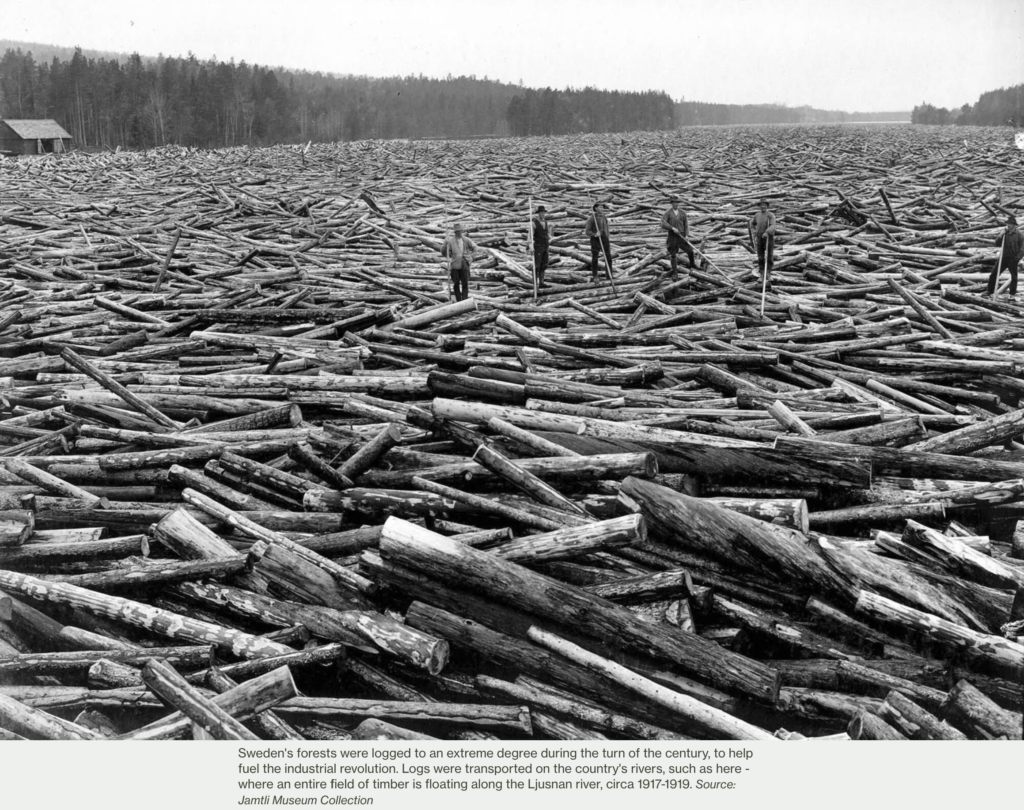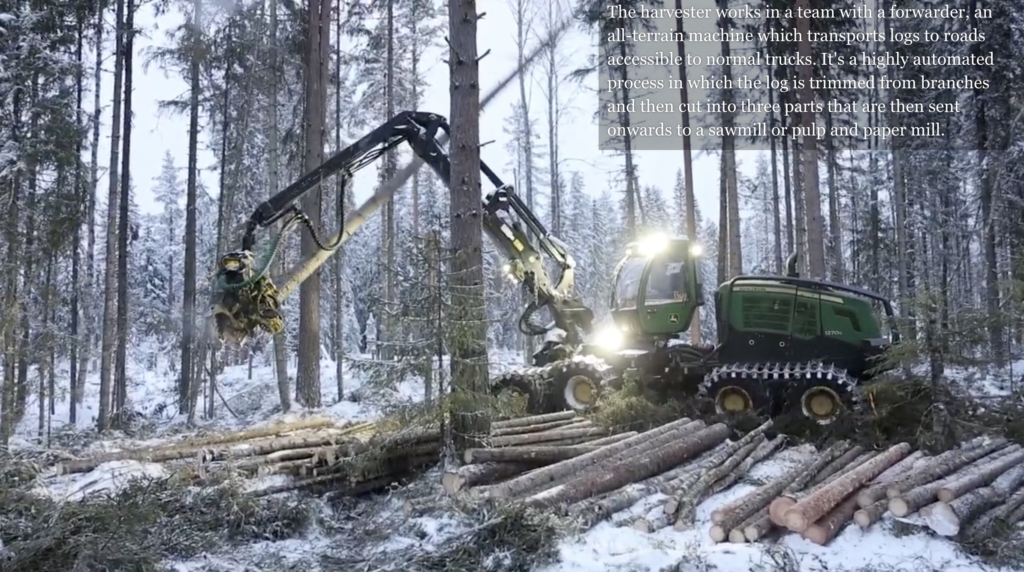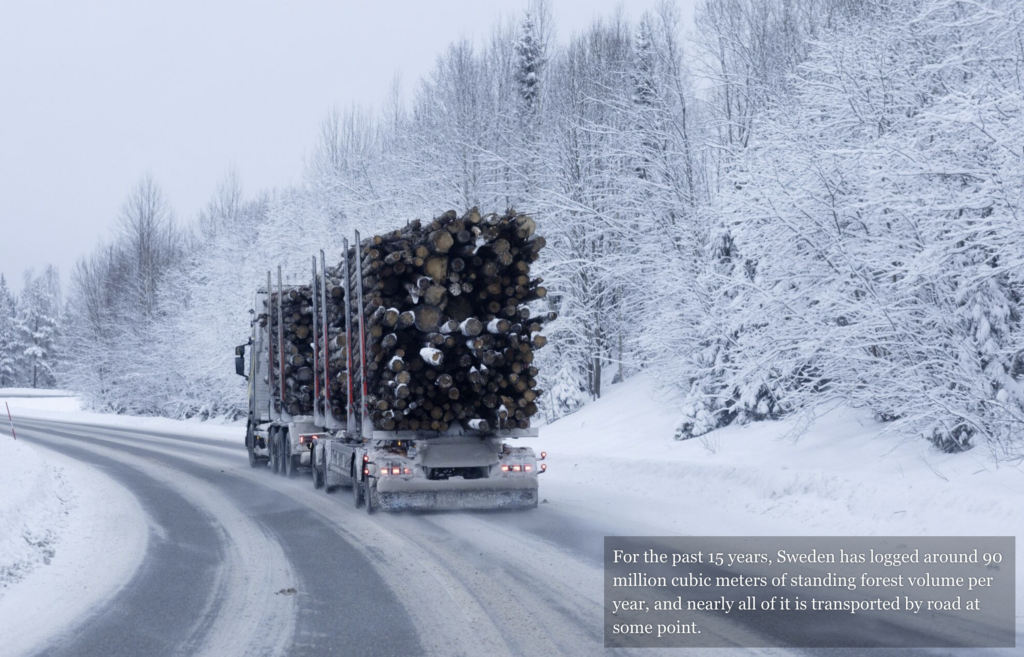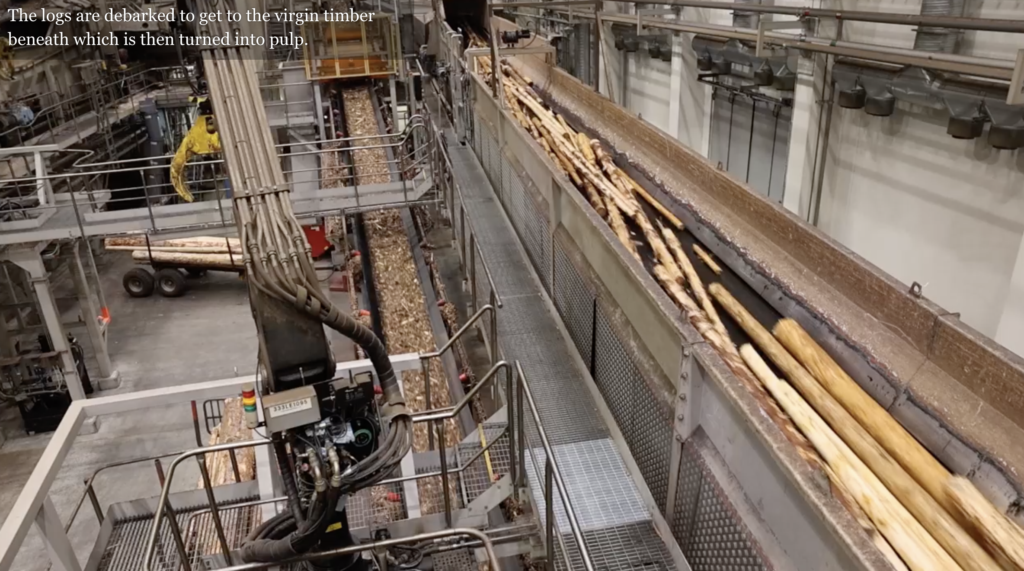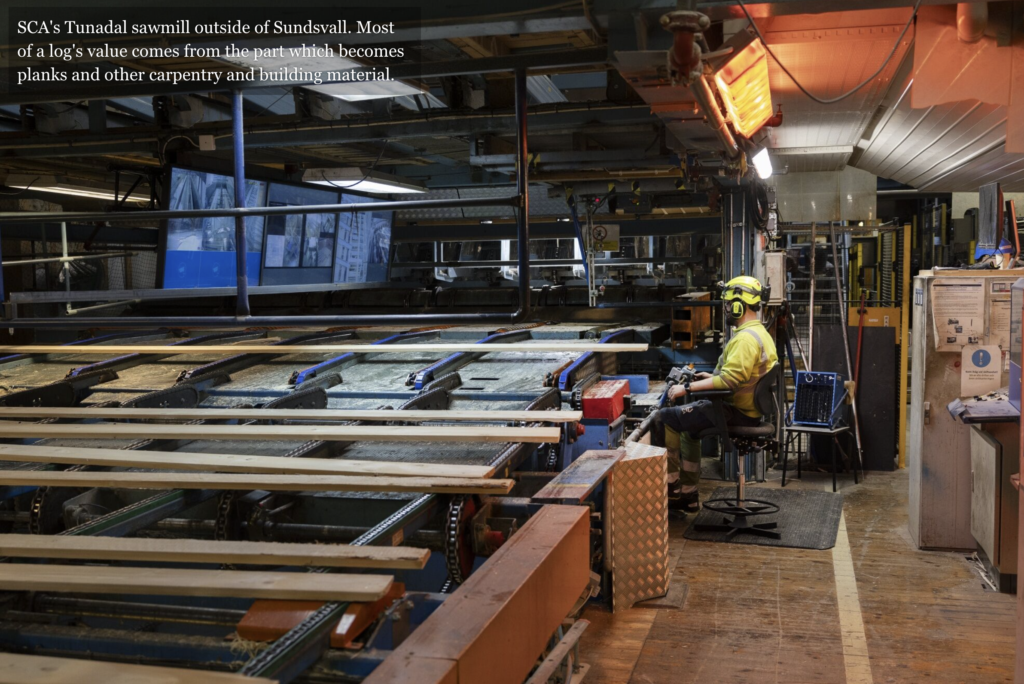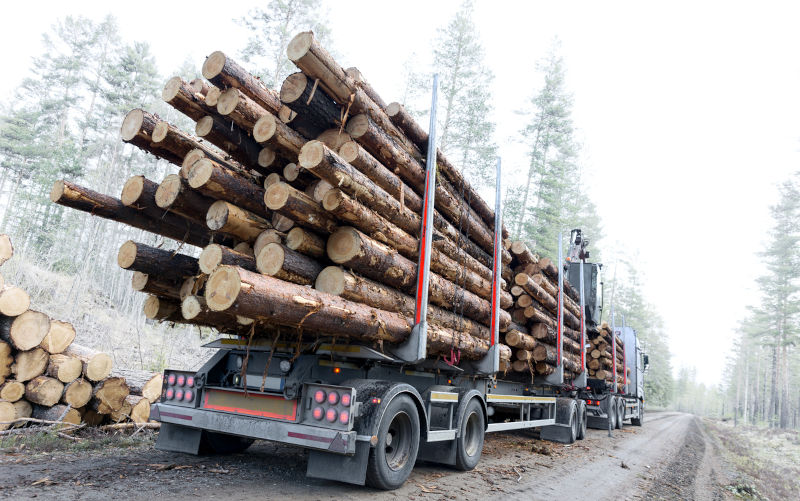Environment: Governments like docile populations, that’s why they intimidate activists
March 2, 2025
Governments want you to feel powerless, but the tools for change are in our hands. Australia’s economy is failing to decarbonise. Burning trees to produce electricity is phoney environmentalism.
You’re never too small to make a difference
I attended The Australia Institute’s third Climate Integrity Summit a couple of weeks ago. These summits are not about the science of climate change. They are concerned with the politics of climate action, specifically the disgracefully low levels of integrity of many politicians and business people when it comes to discussing and taking action on climate change and what we can all do to push for more and more urgent climate action.
In a follow-up communication to summit participants, Richard Denniss, The Australia Institute’s executive director, summed up the messages of the summit:
“The Summit revealed something crucial. The tools for change remain firmly in our hands. This isn’t feel-good rhetoric – it’s evident in how hard government and industry work to convince us we’re powerless. As Polly Hemming noted, ’every person in this room holds power – the only difference is whether you use it to uphold the status quo or to change it’.
“We’ve been conditioned to believe we’re powerless in the face of global challenges, that our voice is too small, our influence too limited. But this learned helplessness is exactly what maintains the status quo. If protest, independent journalism, whistleblowing, and public scrutiny weren’t powerful tools for change, governments wouldn’t be working so hard to restrict them.
“Every speaker at the summit demonstrated just what can be achieved by those often perceived as ‘minor’ players. None of us are too small to make a difference. Not as individuals, and certainly not as a nation.
“When the next wave of headlines drives despair, when geopolitical shifts seem overwhelming, when corporate influence appears absolute – remember that these are precisely the conditions that have historically preceded major change. The mechanisms to achieve integrity and accountability in policy are still within Australia’s grasp.”
Recordings of the summit speakers are available on The Australia Institute’s website.
Are Australia’s emissions really declining?
The Australian Government loves to make a fuss about the (alleged) 29% reduction in our domestic CO2 emissions since 2005 and to claim that we are on track to meet the target of 43% by 2030.
However, it’s long been recognised that most of the credit for Australia’s emissions reductions over the last 20 years should be given to fewer emissions from the land (technically the Land Use, Land Use Change and Forestry sector, or LULUCF). The industrial side of the economy has contributed very little overall, with emissions reductions from electricity generation being balanced by increased emissions from transport and industrial processes, as discussed a month ago.
To help us cut through all the history, jargon, technicalities, acronyms and spin, The Australia Institute’s histogram below clearly shows that our non-land sectors (the major sources of our emissions) have achieved very little – their emissions have hardly changed in the last 20 years. But changes to our land use have increased its capacity to absorb and be a sink for CO2 and so our net emissions have fallen. It’s the land that’s been doing all the hard work, but it’s reaching its limit.

Whether it’s been Howard or Rudd, or Morrison or Albanese, hasn’t made any difference – they’ve all been happy to maintain the fiction that our economy is decarbonising. The truth is very different, however, and the picture is unlikely to change until our governments stop the double play of cosying up to the fossil fuel industry and spinning a yarn to the electorate.
In fairness, Gillard or Abbott did make a difference. Gillard’s not-a-carbon-tax did result in emissions reductions and Abbott’s abolition of it turned the clock back.
Growing use of wood to generate electricity
People have been burning biomass (wood, dung, etc.) on fires for domestic cooking and heating for millennia and many continue to do so to this day.
Burning wood pellets (sourced from native or plantation forests) on an industrial scale to generate electricity is a much more recent phenomenon. Unfortunately, its justification is based on (1) a flawed, or deliberately misleading, understanding of the effect on global warming of the CO2 released from burning wood, (2) illogical international rules about carbon accounting and reporting – the CO2 emissions from burning wood are counted in the agricultural sector of the country where the trees are grown, not the energy sector of the country where the wood is burnt, and (3) failure to recognise that we need to reduce the level of CO2 in the atmosphere right now, not in 60 years when the trees have regrown.
A further problem is that when the wood comes from native forests, there is a loss of both carbon sinks and biodiversity and when the wood comes from plantations, there is often a loss of native forests and/or land needed for agriculture. With both, infringement of local communities’ land rights is common.
Notwithstanding these well-recognised problems, burning woody biomass to generate electricity has increased five-fold over the last 23 years and the need for wood pellets is expected to triple during the 2020s.
The figure below shows the amounts of wood pellets imported and exported by countries in 2023 and predictions for 2030. The US, Canada and Vietnam are the dominant producers in both years, while the major importers are Europe, particularly the UK, and parts of Asia, particularly Japan, South Korea and Taiwan.
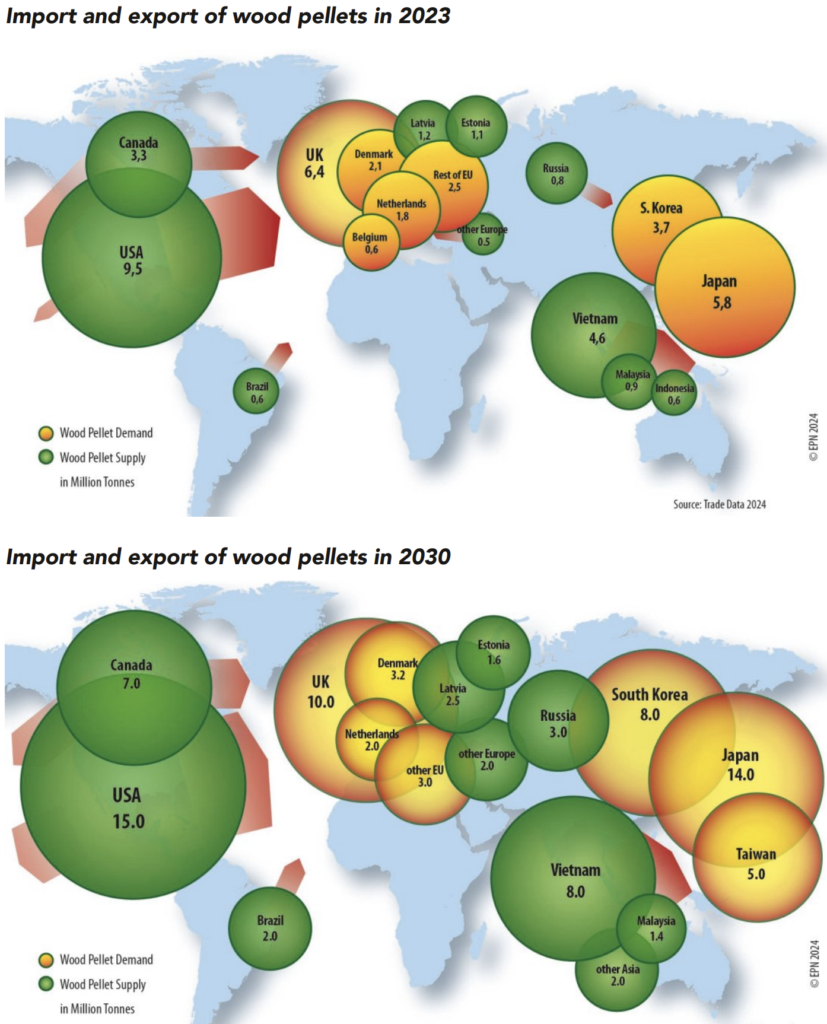
The figure below displays the production and consumption of wood pellets in 2022. It is very clear that the countries of North America and Europe, those most responsible historically for global warming, continue to find new ways to generate greenhouse gases even though they can no longer claim ignorance of the problem. Equally clear is that the production and consumption of wood pellets in South America, Africa, the Middle East and much of Asia is minimal.
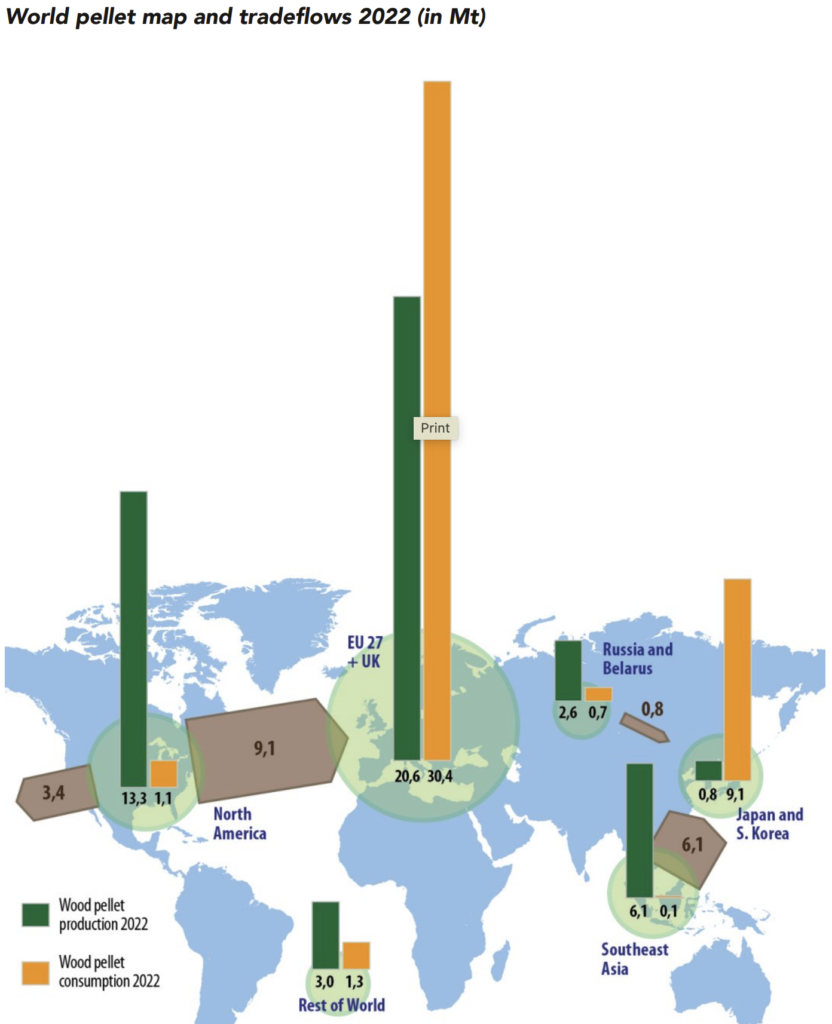
To avoid the predicted, but disastrous, massive increase in burning wood to generate electricity:
- The flawed international biomass carbon accounting rules must be changed so that the emissions generated are counted by the energy sector in the country where the wood is burnt.
- Countries that currently (or have plans to) burn woody biomass on a large scale should change tack and move rapidly to developing supplies of genuine renewable energy.
- Co-firing woody biomass with coal in previously coal-fired power stations should not be considered a form of “abated coal”. Frankly, the whole ridiculous idea of abated coal should be accepted as a fig leaf (and a transparent one at that) and abandoned anyway.
Burning wood pellets to generate electricity ranks with nuclear power, carbon offsets, planting millions of trees and personal carbon foot printing as yet another con by politicians and the fossil fuel industry to delay meaningful climate action.
Managing Scandinavia’s forests responsibly
Sweden and Finland have lots of trees. Forests cover two-thirds of each country and most of them are privately owned. In Sweden, 300,000 individuals own half of the country’s forests. Forestry is important in both countries for family incomes, retirement funds and inheritances, and for jobs and exports.
The private forest owners claim that they manage their land in an environmentally responsible way, including planting two to four trees for every one felled. In fairness, there are now more forests in each country than there were 100 years ago when the forests were extensively logged to fuel industrialisation.
Although it’s claimed that new trees in Scandinavia become carbon sinks after 10 years, old trees are bigger carbon sinks and Finland’s forests have been a source, not a sink, of carbon since 2021.
But those nasty EU bureaucrats in Brussels now want to change all this with their target to increase the EU’s land-based carbon sink by 15% between 2020 and 2030 and make Europe the first climate-neutral region by 2050. The Swedish and Finnish Governments are struggling to placate their citizens and meet their responsibilities to the EU.
Three things stand out for me from this story.
Apart from anything else, the story is worth reading for the pictures and the video of a tree being stripped of its branches and felled and the trunk chopped into four segments in about 30 seconds (see below).
Second, I was struck by how little CO2, in the great scheme of things, the EU’s land will absorb even if the target is met.

In 2030, the EU’s top ten land-based carbon sink countries will remove from the atmosphere less than 300 million tons of CO2 per year. So, let’s say the EU’s grand total will be 300 million tons. This is equivalent to about 0.8% of current global CO2 emissions and 0.6% of global greenhouse gas emissions. I’m not saying the 27 nations of the EU, or any other country, shouldn’t be increasing their carbon sinks, they all should, but let’s be honest and recognise that this is going to make a relatively small contribution to keeping global warming under 1.5oC.
Finally, this is yet another story of the challenges that need to be faced if we are to reduce the global environmental footprint to a sustainable level without completely destroying families, communities and societies. If we don’t plan and manage difficult transitions responsibly now, the consequences of delay will make the current challenges look like the good old days.
A century of Scandinavian logging
